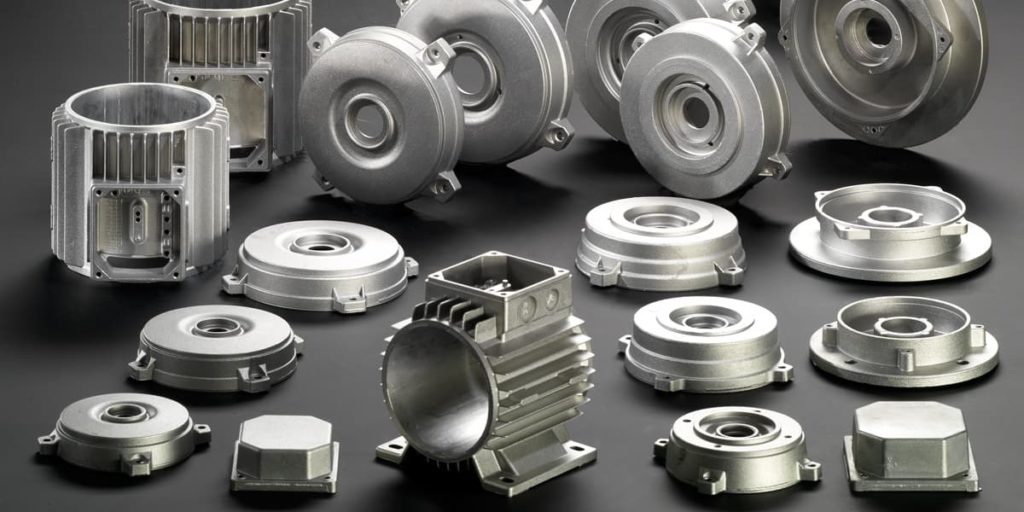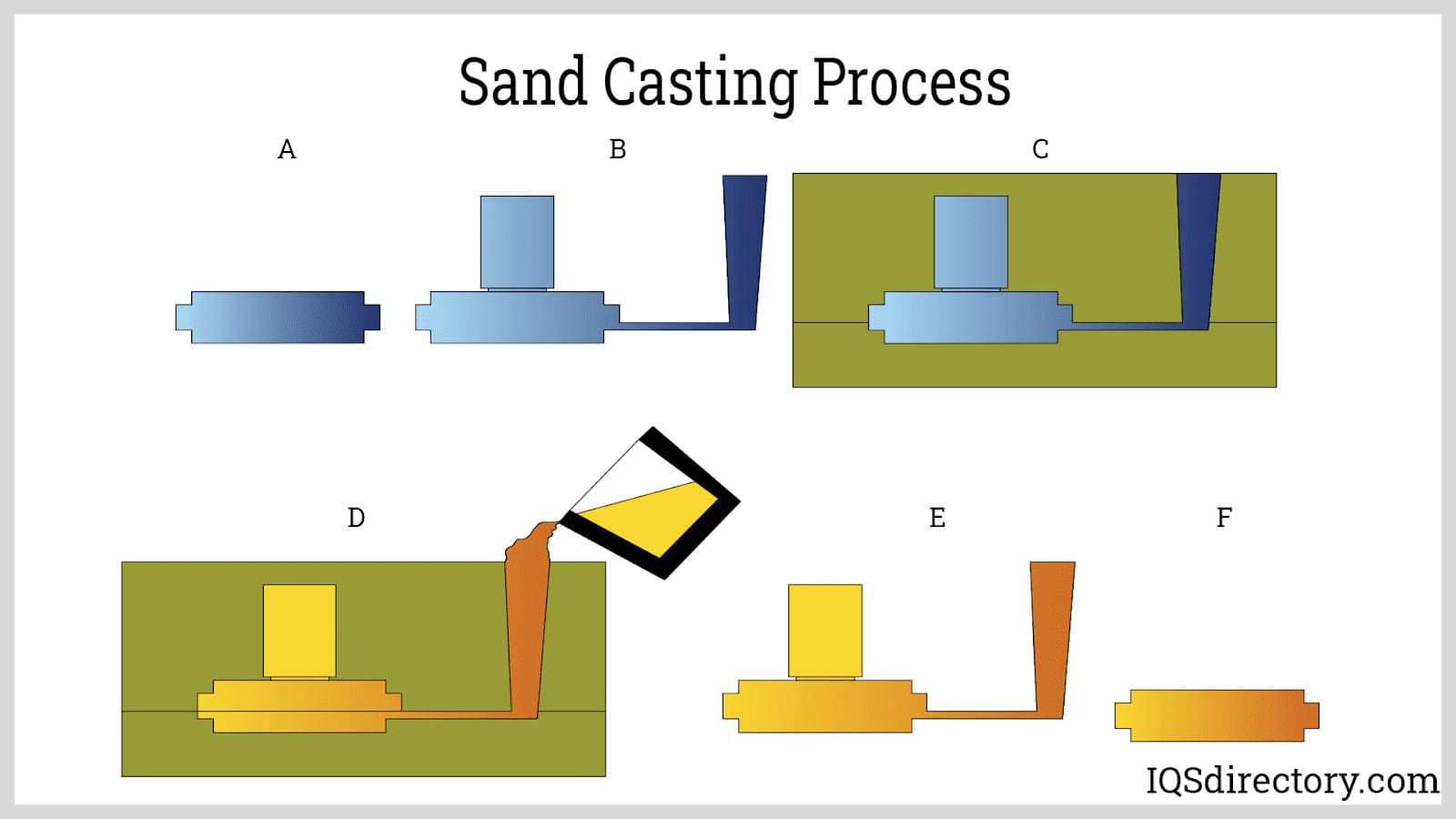Innovations in Aluminum Castings: methods that improve quality and efficiency
Wiki Article
The Relevance of Aluminum Foundry in Advancing Industrial Manufacturing Techniques
The Aluminum Foundry plays a critical role in the advancement of industrial manufacturing strategies. Its light-weight residential or commercial properties and versatility make Aluminum an ideal option for numerous applications. Advanced casting approaches, consisting of die spreading and 3D printing, allow for detailed styles and automation. As the market shifts towards automation and sustainability, inquiries occur regarding the future trajectory of Aluminum factories and their influence on making efficiency. What technologies and obstacles exist ahead?The Role of Aluminum in Modern Manufacturing
Aluminum plays a critical function in contemporary manufacturing due to its one-of-a-kind homes and adaptability. As a light-weight metal, it significantly decreases the overall weight of products, enhancing fuel efficiency in transportation and aerospace markets. Its superb deterioration resistance guarantees durability and dependability, making it excellent for numerous applications, from automotive components to constructing materials. Light weight aluminum's pliability permits it to be quickly formed right into intricate designs, helping with cutting-edge item growth. Its conductivity makes it ideal for electrical applications, adding to improvements in electronic devices and renewable power technologies. The flexibility of Aluminum additionally reaches its recyclability, which adds to sustainable production techniques. As markets remain to focus on performance and ecological duty, Aluminum continues to be an essential product, promoting advancement and boosting manufacturing processes throughout multiple markets. Its role is not merely functional; it is foundational to the advancement of contemporary commercial practices.Trick Advantages of Aluminum Casting
The benefits of Aluminum casting are substantial, adding to its popularity in numerous industrial applications. One key advantage is the light-weight nature of light weight aluminum, which lowers transport prices and boosts gas effectiveness in aerospace and automobile markets. Additionally, aluminum's exceptional deterioration resistance extends the life expectancy of actors components, making them optimal for exterior and aquatic environments.Additionally, Aluminum casting permits complex geometries and detailed designs, supplying manufacturers with higher adaptability in item growth - Wisconsin Aluminum Foundry. The material likewise shows good thermal and electrical conductivity, making it ideal for a variety of digital applications
Another benefit is the quick solidification procedure, which causes finer microstructures and boosted mechanical residential properties. Light weight aluminum can be recycled repetitively without losing its fundamental top qualities, advertising sustainability in manufacturing methods. These advantages underscore Aluminum spreading's critical duty beforehand commercial manufacturing methods while meeting diverse engineering demands.
Cutting-edge Casting Methods and Technologies
Many ingenious spreading methods and modern technologies have actually arised to improve the effectiveness and quality of Aluminum production. Among these, die casting stands out as a technique that enables high-volume manufacturing of intricate shapes with excellent dimensional precision. This method makes use of high stress to inject liquified Aluminum right into a mold and mildew, resulting in smooth surfaces and lowered requirement for machining.One more notable development is using 3D printing for molds, which allows rapid prototyping and reduces lead times substantially. This innovation enables complex designs that standard techniques may have a hard time to achieve.
Furthermore, financial investment casting remains to evolve, making use of sophisticated products and processes to produce accuracy parts. The adoption of computer system simulations in the spreading process has actually even more boosted results by predicting possible problems and maximizing mold and mildew designs. With each other, these advancements are transforming Aluminum shops, paving the method for more effective production and remarkable product quality in numerous sectors.
Environmental Effect and Sustainability in Aluminum Foundries
As sectors progressively focus on sustainability, the environmental effect of Aluminum foundries has actually come under examination. These centers are significant contributors to greenhouse gas discharges and energy consumption, mainly because of the energy-intensive procedures entailed in melting and spreading light weight aluminum. The extraction of bauxite, the main ore, more exacerbates environmental issues, causing habitat destruction and pollution.In action to these challenges, many Aluminum foundries are embracing extra sustainable techniques (Aluminum Castings). Advancements such as reusing scrap Aluminum greatly reduce power usage and exhausts, as reusing needs only a fraction of the energy needed for key production. Furthermore, the assimilation of renewable resource resources, such as solar and wind power, is obtaining traction in factories aiming to lower their carbon impact
Furthermore, improvements in innovations that lessen waste and boost source performance are coming to be essential for the future of the Aluminum sector. These efforts underscore the shift towards an extra lasting and ecologically responsible strategy in Aluminum shops.
Applications of Aluminum Spreading Across Industries
Aluminum spreading locates extensive application across varied markets, owing to its desirable properties such as light-weight, rust resistance, and excellent machinability. In the auto market, suppliers utilize Aluminum spreadings for engine elements, transmission real estates, and structural parts, improving fuel efficiency and performance. The aerospace market take advantage of aluminum's strength-to-weight ratio, utilizing it in airplane frameworks and elements, which add to minimized overall weight and improved fuel economy.Additionally, the consumer electronics industry utilizes Aluminum castings for real estates and chassis, integrating visual charm with resilience. In construction, Aluminum castings are utilized for window frameworks, doors, and building components, providing both functionality and style versatility. Furthermore, the aquatic market uses Aluminum spreading for watercraft hulls and installations, making certain resistance to saltwater rust. This adaptability across numerous areas emphasizes Aluminum spreading's vital duty in contemporary commercial applications, driving development and effectiveness.
Obstacles Dealt With by Aluminum Foundries
Aluminum shops run into significant difficulties in meeting stringent ecological guidelines while keeping operational efficiency. Additionally, a scarcity of proficient labor intensifies these problems, hindering performance and development. Resolving these issues is necessary for the sustainability and growth of the Aluminum casting industry.Environmental Rules Compliance
Although Aluminum shops play an important duty in industrial production, they frequently encounter substantial difficulties in adhering to environmental laws. These regulations are designed to decrease air and water contamination, waste generation, and energy intake. Shops usually must spend in advanced modern technologies to meet rigorous discharge criteria and handle hazardous products effectively. The expenses related to these upgrades can Metal Castings strain financial sources, particularly for smaller sized operations. In addition, the intricacy of passing through governing frameworks can bring about conformity mistakes, leading to pricey penalties. Constant modifications in laws call for foundries to adjust promptly, often necessitating recurring training and updates in functional techniques. Balancing governing conformity with manufacturing performance remains an essential worry for the Aluminum Foundry sector.Skilled Labor Shortage
As the Aluminum Foundry industry proceeds to advance, a pressing challenge has emerged: a proficient labor scarcity that intimidates the industry's productivity and growth. This lack is mostly sustained by an aging workforce and the absence of passion among younger generations in going after careers in manufacturing. Lots of experienced work require customized training and experience, which are progressively hard to locate. Consequently, Aluminum factories struggle to maintain operational performance, causing hold-ups and raised manufacturing expenses. Efforts to attract new skill through apprenticeship programs and collaborations with universities are underway, yet these initiatives take some time to yield results. Without a durable increase of experienced workers, the Aluminum Foundry market may encounter considerable obstacles in meeting the needs of contemporary commercial manufacturing.Future Patterns in Aluminum Foundry Production Techniques
The future of Aluminum Foundry production strategies is positioned to be considerably formed by improvements in automation and sustainable material developments. Automation is expected to enhance efficiency and precision in Foundry procedures, lowering labor prices and decreasing human mistake (Aluminum Foundry). On the other hand, an expanding focus on sustainability will drive the development of environment-friendly materials and methods, straightening the sector with worldwide environmental goalsAutomation in Foundry Processes

Sustainable Product Innovations
While the Aluminum Foundry sector embraces automation, an identical focus on lasting material innovations is improving manufacturing strategies for the future. Advancements in recycling processes are making it possible for factories to use post-consumer light weight aluminum, markedly lowering energy intake and waste. The advancement of environment-friendly ingredients and finishings is decreasing the ecological influence connected with typical materials. Innovations in lightweight Aluminum alloys are boosting performance while promoting sustainability, making products not just much more reliable yet additionally simpler to reuse at the end of their life cycle. As the sector adapts to more stringent ecological policies, these sustainable methods are becoming necessary. Ultimately, the dedication to lasting product innovations in Aluminum foundries will drive boosted productivity while addressing worldwide ecological difficulties.Often Asked Concerns
Exactly How Does Aluminum Compare to Other Steels in Casting?
Aluminum offers benefits over other steels in spreading, consisting of reduced melting points, excellent fluidity, and resistance to deterioration. These residential or commercial properties make it possible for intricate designs and faster manufacturing, making Aluminum a preferred choice for numerous markets.What Precaution Remain In Location in Aluminum Foundries?
Security procedures in Aluminum foundries include safety gear for employees, appropriate air flow systems, regular devices upkeep, fire avoidance protocols, and stringent adherence to safety policies, ensuring a protected atmosphere while minimizing the risk of accidents and injuries.Exactly How Are Aluminum Alloys Selected for Particular Applications?
Aluminum alloys are selected based upon mechanical residential properties, deterioration resistance, and thermal conductivity. Designers review application demands, thinking about factors like weight, toughness, and environmental problems, ensuring suitable efficiency for specific commercial or commercial usages.What Is the Ordinary Life Expectancy of Aluminum Cast Products?
The typical life-span of Aluminum actors items usually varies from 20 to half a century, depending upon environmental factors, usage conditions, and maintenance techniques. Proper treatment can considerably expand their useful durability and performance effectiveness.
Exist Qualifications for Aluminum Foundry Processes?
Yes, there are qualifications for Aluminum Foundry procedures, including ISO 9001 for top quality administration systems and details sector requirements like ASTM and SAE, which guarantee adherence to top quality and safety and security in Aluminum manufacturing and casting.Aluminum foundries play a crucial duty in commercial manufacturing, they commonly face considerable challenges in complying with ecological regulations. Aluminum foundries struggle to keep functional performance, leading to delays and enhanced manufacturing expenses. The future of Aluminum Foundry manufacturing methods is poised to be considerably shaped by advancements in automation and sustainable material technologies. Significantly, automation is shaping the landscape of Aluminum Foundry manufacturing techniques, driving effectiveness and precision. While the Aluminum Foundry market welcomes automation, a parallel emphasis on lasting material developments is improving manufacturing methods for the future.
Report this wiki page